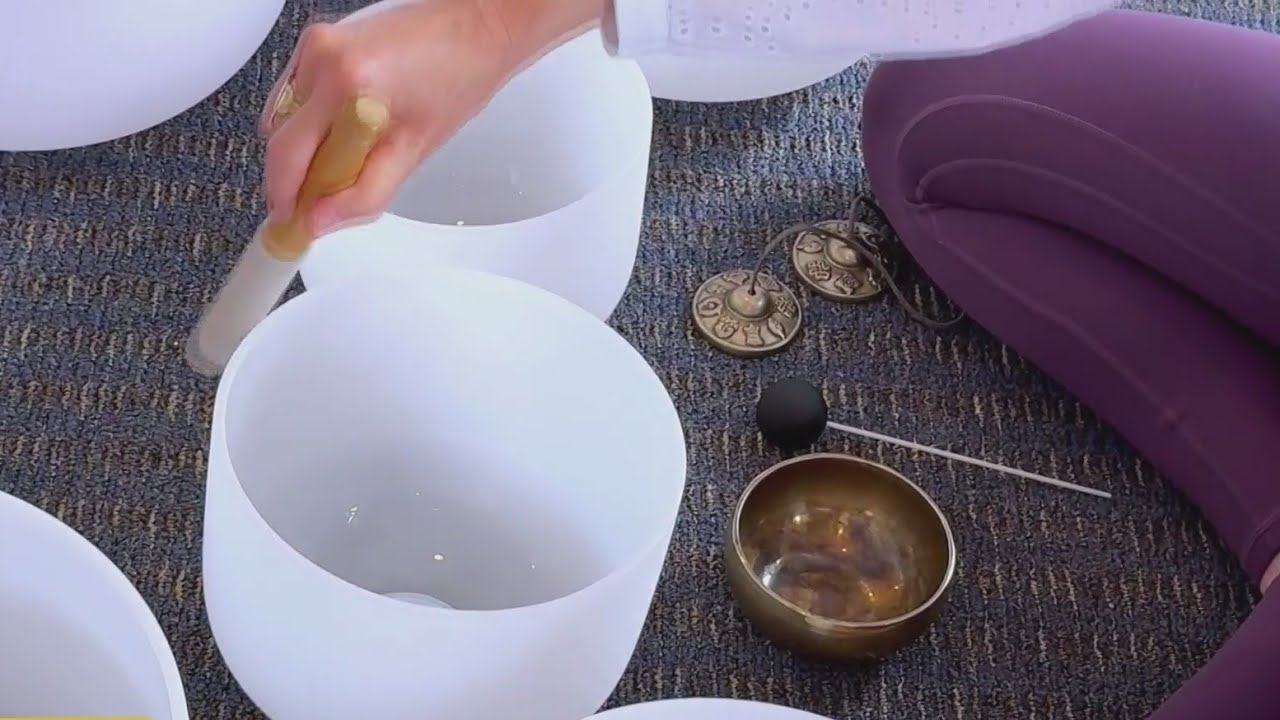
John Hawk Insunrated – Pittsburgh’s Sound Therapy scene has seen remarkable growth in 2025. What started as a wellness trend quickly gained attention in academic circles. At the forefront of this movement is Monique Mead. She is a renowned violinist and director of music entrepreneurship at Carnegie Mellon University (CMU). Mead has helped shape the local sound therapy landscape by integrating traditional instruments and innovative approaches.
The therapy uses instruments like violins, quartz crystal bowls, and gongs to produce calming auditory experiences. These sounds aim to reduce stress and promote relaxation. Students at CMU were inspired by this approach. They launched Scottie Sound Bath, the first university-based sound therapy program in the United States. This program combines ancient techniques with modern wellness goals. Though rooted in ancient Eastern traditions, sound therapy’s scientific foundation is still developing. However, the practice aligns with a growing acceptance of music therapy in American medicine. The potential mental health benefits draw interest from both researchers and practitioners.
Monique Mead has become a key figure in popularizing sound therapy locally. Her background as a classical violinist brings musical expertise to the practice. She promotes the entrepreneurial side of music through her role at CMU. This allows her to blend art, science, and business in sound healing initiatives. The Scottie Sound Bath program was developed by CMU students eager to expand sound therapy’s reach. The initiative provides participants with immersive sound experiences using diverse instruments. The calming effects reportedly support mental clarity and emotional balance. Students also conduct research to evaluate therapy outcomes.
Local practitioners collaborate with Mead and students to expand educational opportunities. Workshops, public sessions, and academic events raise awareness about sound therapy benefits. The community embraces these offerings, which aim to improve overall well-being.
“Read about: Gen Z’s New Priorities: Mental Health Over Money”
Sound therapy uses specific frequencies and vibrations to influence the body and mind. Instruments like crystal bowls emit harmonic overtones. These overtones can induce meditative states and deep relaxation. The vibration from gongs creates physical sensations that some find soothing.
Violin music contributes melody and rhythm, guiding emotional release. The combination of instruments generates a rich auditory environment. Participants often lie down or sit comfortably to absorb the sounds fully. This environment encourages mindfulness and stress relief. Practitioners tailor sessions to individual or group needs. Some focus on reducing anxiety, while others target improved sleep or pain management. The therapy complements other wellness practices such as meditation and yoga.
“Read more: Eradicating Child Labor: Uttar Pradesh Launches Major Awareness Campaign”
At CMU, research teams explore sound therapy’s psychological and physiological effects. Preliminary studies suggest potential benefits for mood regulation and stress reduction. However, rigorous scientific validation is still needed.
Faculty and students investigate how different sound frequencies affect brain activity. Emerging data supports claims of improved relaxation and cognitive function. These findings have encouraged expanded academic support for sound therapy programs. The university aims to integrate sound therapy with broader health science curricula. This could lead to future practitioners trained in both music and healthcare disciplines. Collaboration with medical institutions is also being explored.
Pittsburgh’s sound therapy initiatives have helped normalize alternative healing methods. They provide accessible wellness options for diverse populations. Local businesses and wellness centers incorporate sound therapy into their services. Public sound bath events have attracted growing audiences eager to experience the benefits firsthand. Many attendees report enhanced mental clarity and emotional release after sessions. This feedback fuels continued program development. Looking ahead, Pittsburgh’s sound therapy scene aims to expand its educational and clinical reach. Partnerships with healthcare providers could integrate sound therapy into complementary treatments. Increased public and academic interest will likely drive further innovation.
John Hawk Insunrated - Artists, workers, and students increasingly turn to creative practices for wellbeing to manage stress and protect…
John Hawk Insunrated - Many artists rely on personal sketchbook creative freedom to explore ideas safely without pressure or judgment.…
John Hawk Insunrated - Many professionals are experimenting with new skills to stay relevant, yet few truly analyze what works…
John Hawk Insunrated reports how the viral soft life nervous system content on TikTok mixes soothing visuals with mixed advice…
John Hawk Insunrated highlights standout DIY experiments from this year that blend fun, learning, and simple tools at home. Why…
John Hawk Insunrated highlights favorite DIY experiments this year that blend simple household items with impressive scientific and artistic results.…